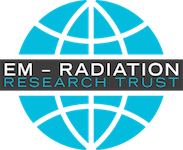Abstract
There are substantial concerns that extended exposures to weak radiofrequency (RF) fields can lead to adverse health effects. In this study, HT-1080 fibrosarcoma cells were simultaneously exposed to a static magnetic flux density between 10 μT�T and 300 μT�T and RF magnetic fields with amplitudes ranging from 1 nT to 1.5 μT in the frequency range from 1.8 to 7.2 MHz for four days. Cell growth rates, intracellular pH, hydrogen peroxide, peroxynitrite, membrane potential and mitochondrial calcium were measured. Results were dependent on carrier frequency and the magnitude of the RF magnetic field, modulation frequencies and the background static magnetic field (SMF). Iron sulphur (Fe-S) clusters are essential for the generation of reactive oxygen species and reactive nitrogen species (ROS and RNS). We believe the observed changes are associated with hyperfine couplings between the chemically active electrons and nuclear spins. Controlling external magnetic fields may have important clinical implications on aging, cancer, arthritis, and Alzheimer’s.

